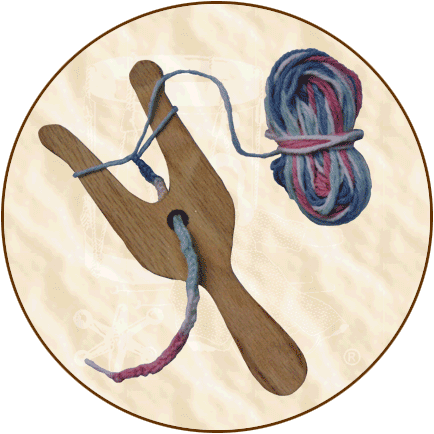.
Continued from product description
on Home Crafts' Page One...
Historical
Background: The lucet is used to make a square braid much
like that of the spool knitter. Yarn or pearl cotton is the choice
for beginners but silk thread or floss is sometimes preferred
by advanced workers. Once the basic technique is learned, intricate
patterns with two or three different colored threads and twisted
stitches can be employed. The possibilities are endless. The
end product can be used for drawstring bags, decorative cording
on jackets, button loops, lacing for clothing, or anything one
can imagine!
A lucet is a small handheld tool used to make a braided cord.
It is sometimes referred to as a "lucet fork" or "chain
fork." It is shaped like a miniature lyre with a small hole
in the center. The resulting cord can be simple or, with more
technique, a fancier cord can be produced. The lucet is thought
to have been used during the Viking era as archeological research
has discovered man-made bone objects shaped like lucets. This
craft tool was commonly used in Europe during the 16th century,
and most women would have had one in their own sewing basket.
When machine-made cords came into use during the 1830s, use of
the lucet diminished. This small tool has had a few popular revivals,
first in the mid-19th century and then later during the Edwardian
era (1901-1910). There is more lucet information available today
than ever before and because of this, the lucet is making yet
another comeback.
Lucets have been made of natural materials such as bone, wood,
or horn (which was usually used by less-affluent families). Wealthier
women had fancy lucets made from ivory, tortoise-shell, or mother
of pearl. Some surviving examples of lucets have beautiful metal
inlays, with steel being a favorite at the end of the 18th century.













